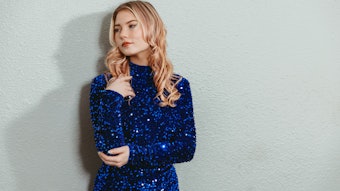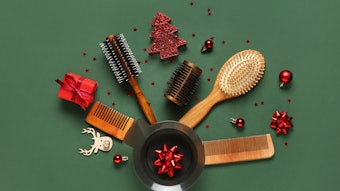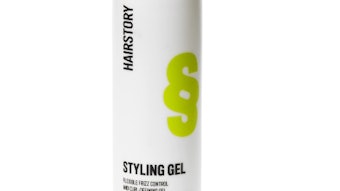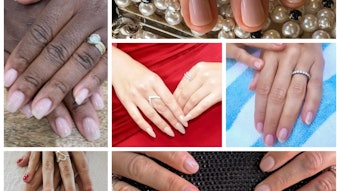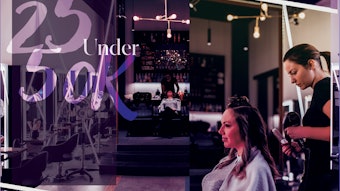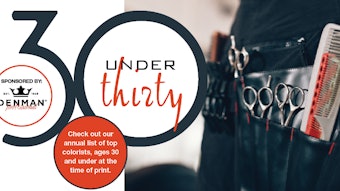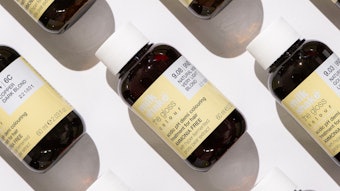
When I met Doreen Guarneri, cofounder of the popular keratin treatment and maintenance line Simply Smooth, at the International Beauty Show in NYC, she wanted to set the record straight: “Keratin isn’t really a straightener; it smoothes hair. It’s about fixing the keratin levels in the hair; it’s about smoothing and repairing hair.”
She spoke of the treatment with passion. “I say there are ‘degrees of keratin.’ We have a product for every need and service. No hair type is the same, and it shouldn’t all be treated the same. This truly is ‘keratin art,’” she asserted.
So it was with very little hesitation that I accepted Guarneri’s invitation to experience Simply Smooth Keratin Treatment in her salon (which also serves as a test salon), The Look Salon in Long Island. How could I not? I was told, “You become the person in control of your hair.” Perfect!
When I arrived, I settled in to the first round of business: Washing my hair with a shampoo that has a pH level of 9. “We usually wash three to four times to remove all the residue,” says Guarneri. She explains that, despite not using conditioner, this shampoo is so light, she won’t even have to lift a brush to my hair; the tangles will simply fall out with ease.
From there she blow-dries it, roughening up my hair to keep the cuticle open. My unconditioned hair takes on a bushy likeness. “We break the ethics of hairstyling—what we swore we’d never do,” laughs the effervescent Guarneri. “We make you look bad first!” She explains that the hair must be 100% dry so that it drinks up the treatment. When my hair is dryer than the Sahara (and just as vast—it has grown seemingly massive), she shakes up the Simply Smooth Keratin Treatment and starts applying it section by section. “This is a light application; the average head only takes about 2 ounces. You apply a little, and then comb it through. You comb and blend so as to not oversaturate the hair.” Why not drench hair in the stuff? “The more people add, the more they waste, plain and simple. You waste product, and you waste time,” she says matter-of-factly.
After the treatment starts to set, things begin to heat up—literally. To “cure” a keratin treatment, you must apply heat in the form of a flat iron. “Irons are to keratin what developers are to haircolor,” Guarneri sings. And, each can have a different effect. Plate type and temperature are key to a successful smoothing. “Really, it’s all relative to a person’s hair texture. Hair that is strong in texture can withstand—and need—higher temperatures. But not every head needs 450º F. You can burn hair, break it or cure too fast. On the other hand, the wrong plate and temperature might cause you to not cure enough,” she says.
Guarneri whips out a special flat iron, the Cure Tool, which has paramagnetic alloy plates. “This, we have found, is the perfect blend of metals to not create static,” she says. She notes that most of the phone calls her company’s dedicated keratin hotline receives have to do with iron issues. “The fact is that every plate delivers a different ‘cure’ for keratin. Some irons leave keratin sitting on top of the hair,” she reveals. Also, most heads of hair boast more than one texture, therefore requiring different levels of heat throughout the head. But mainly, stylists tend to use their irons at a too-hot temperature—something that Guarneri is hoping to break stylists of doing. (She teaches a three-hour certification class to stylists who want to use Simply Smooth, and encourages them to seek further education to become “master keratin artists.”) “Hair always talks to you. If you listen, it tells you what to do,” she nods.
Case in point: She passes the iron methodically over each section of my hair, “listening” (or rather, watching) for what she calls the “three S’s”: shine, static and slip. “How many passes you do with your iron is determined by these three ‘S’s.’ First, hair gets shiny. Then, I notice a little bit of static. Last, there is increased slip. You have to watch what the hair does to determine the best results,” she explains.
At the end, she swipes a few more passes over my ends because “they didn’t cure at the same rate.” (Read: They’re damaged and need a little more TLC). My hair is straight and feels a bit heavy, but three days later, after I am able to wash it, I put it to the test: I style it. And I notice that my ends, which have not had a healthy sheen to them in what must be 15 years, are now just as shiny as my ultra-glossy roots. My hair feels smooth and silky. I run my fingers through it almost constantly (new bad habit, but hey! Who cares?). And, like Guarneri promised, I am now the person in control of my hair. Need I say more? —Karie L. Frost


